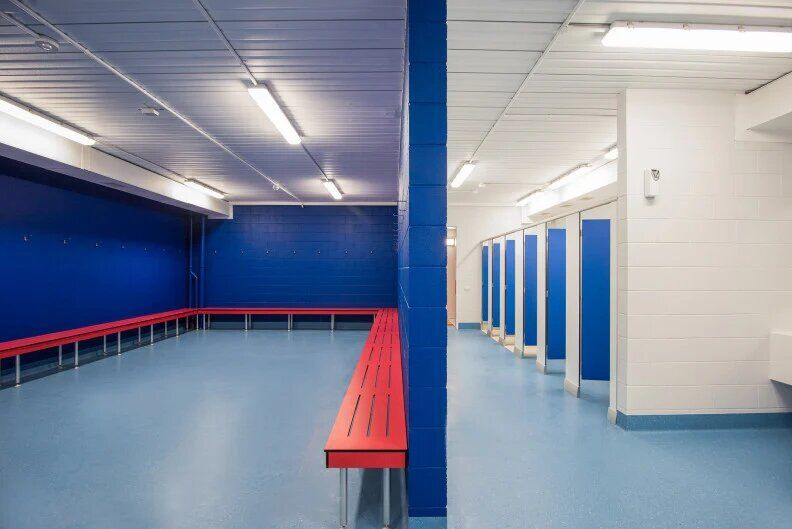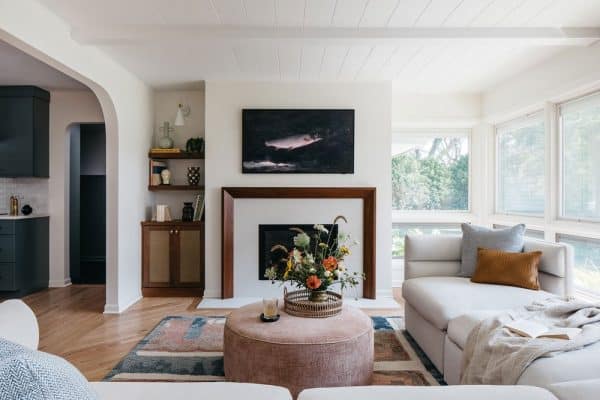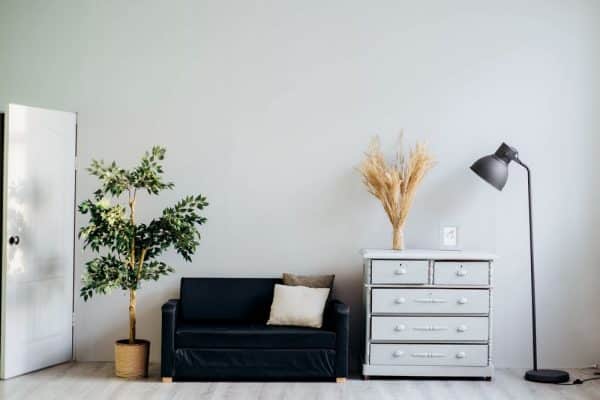By Louisa Glennon & Stephen Moorcroft
Discussions around gender inequality are commonplace. From closing the gender pay gap and promoting more women into senior management positions, to supporting female athletes, historical gender imbalances are being rectified by addressing largely unconscious bias.
While it may not seem like an obvious step towards gender equality, there is a growing movement to ensure inclusivity in the design and planning of change facilities. From professional sports clubs, to corporate workplaces and community organisations, there is a legacy of male-biased changing rooms. With increasing government focus and growing media interest, this is under a spotlight.
As the diversity conversation becomes ever more serious, the unconscious biases that have evolved over time need to be more consciously addressed. Examples of design legacies are many and varied, such as speech recognition software that doesn’t recognise female voices, and even spacesuits biased towards the male physique, which ultimately delayed the first all-female spacewalk.
In sport centre design, the same bias exists. When the Australian Football League (AFL) introduced a professional women’s league (the ALFW) in 2017, female participation skyrocketed; however, with no dedicated changing facilities at many clubs around Australia, female AFL players found themselves getting changed in their cars or having to go home for a shower. In Canberra, this was sensationalised with female players having to change on the sidelines in public view.
A lack of changing facilities is also experienced by women in the corporate world. Research by the City of Sydney showed that women were far less likely to walk, run or cycle to work than their male counterparts. This was partly due to the general lack of female end-of-trip facilities and also the traditional end-of-trip location being in basements with reduced lighting and labyrinthine access, potentially leaving women feeling unsafe and uncomfortable using these spaces.

Designing for inclusivity
Inclusivity isn’t just a buzzword. Inclusivity in design ensures that facilities can be used by all members of the community, while also futureproofing them. Even if we are designing for a male-only sports team, we still recommend the provision of unisex changing facilities to allow clubs to add a female team in the future. We also recommend additional facilities to cater for all genders of support staff, which increasingly includes coaching teams of alternative genders to the players. It is important to recognise the varying nature of change facilities – for a sports team, the changing room is a traditional place of team building; somewhere to commiserate or celebrate; and a place to sing and to discuss tactics. This is quite different to a CBD end-of-trip facility, where even a hushed conversation between two colleagues can be relatively rare. Designing inclusively isn’t just about designing ‘for women’ – it’s creating nongendered spaces that can be used by any gender, with a greater range of facilities to encompass all needs.
The traditionally male changing rooms with open showers and a urinal trough are becoming a thing of the past. Instead, changing rooms increasingly focus on safety and privacy, with the inclusion of private toilets and showers with lockable doors – and sometimes a bench that allows players to get changed within a cubicle if desired. These are features of increasing interest for men, just as they are for women. The coaching and planning spaces to build team tactics and camaraderie can still exist outside of the core change needs. Designing such spaces needs a little more thought around every possible current and future user, respecting their various needs.

Flight to quality
In corporate offices, end-of-trip facilities have become a key differentiator for new buildings, and for the repositioning of existing assets in the race to attract tenants. This aligns to an increased focus on wellness across corporate Australia that, in turn, assists the fight for talent. Many commercial clients report that their approach to wellness, including the quality of their end-of-trip facilities, is critical in the attraction of great employees. These spaces are no longer an afterthought tucked into leftover space, and they are getting bigger and better, often becoming destinations in their own right and generally supplementary to any adjacent commercial gym offer. User experience planning dictates critical adjacencies with safe and secure routes from building entry points. This includes vehicle parking, pedestrian ground-floor lobbies, dedicated cycle access with secure bicycle storage and easy access to office spaces.
We consider privacy throughout by checking and double-checking all potential sightlines. Secure entry, careful zoning between wet and dry spaces, comfortable light levels, and enhanced air change are all now expected. An appreciation of a range of different exercise preferences, range of bicycles to be secured (including those of very high value), yoga studios, warm-up spaces, spare parts, maintenance stations and excellent drying facilities are increasingly typical. For the more enthusiastic, their damp clothes can dry between the morning run and the lunchtime workout.
In the changing rooms themselves, we design small locker and change areas, giving intimacy to larger spaces. For vanity benches, we oversize the sinks and surrounding benchtops, provide even and diffused lighting to a face plane, and always include driers, straighteners, and space for towels, soaps and moisturisers, and generally acknowledge the shift towards a hospitality focus. The landlords we work with want to recreate high-end hotels – they want tenants to be attracted to using their buildings, and the services they provide are intended to make the working day better and easier.
In both corporate and sports worlds, we’ve seen a dramatic improvement in the budgets for these facilities, and the resultant increased provision of space, better adjacencies, simpler entry sequences, breadth and scale of offer, higher quality of materials and more thorough design consideration, which results in a more comfortable aesthetic and a much longer-lasting built product.
Sports teams use these spaces to prepare, bond, share inspiration, get fired up for peak performance and reflect. In corporate offices, these spaces serve as a physical and mental break at the start, middle, or end of the working day. These are spaces that should overtly address stress and encourage wellbeing. Thought and investment in creating universally welcoming and safe equal access to the full gender diversity of these communities is critical so they can flourish.








